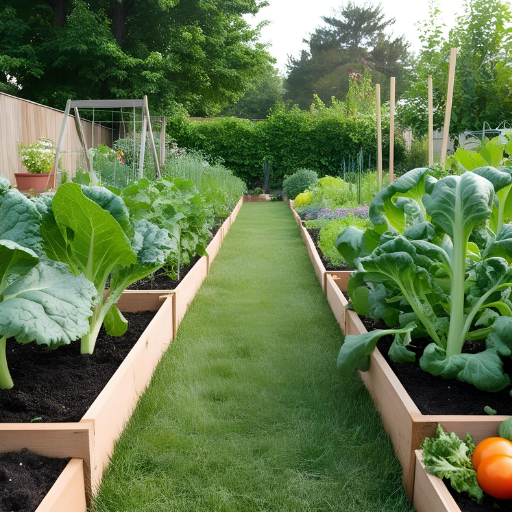Creating a home garden is one of the most rewarding hobbies you can take on. Whether you have a backyard or a few pots on a balcony, gardening brings nature closer and offers relaxation, beauty, and even fresh produce. If you’re a beginner unsure of where to begin, this step-by-step guide will help you start your home garden with confidence.
Step 1: Decide What Kind of Garden You Want
Before grabbing a shovel, think about what you’d like to grow. There are several types of home gardens:
-
Vegetable Garden – For fresh produce like tomatoes, lettuce, and carrots.
-
Herb Garden – For culinary herbs like basil, mint, rosemary.
-
Flower Garden – To enjoy blooms and enhance your outdoor aesthetics.
-
Succulent or Indoor Garden – Low-maintenance, great for small spaces or beginners.
Deciding on the type helps you choose the right tools, soil, and location.
Step 2: Choose the Right Location
Plants need sunlight, so pick a spot that gets at least 4–6 hours of direct sun a day. Check how sunlight falls throughout the day. Avoid shady or windy areas unless you’re growing plants that prefer shade, like ferns or hostas.
If you’re working with a small space like a balcony, windowsill, or patio, container gardening is your best friend. Even a sunny windowsill can host a beautiful herb garden.
Step 3: Get to Know Your Climate and Soil
Your local climate determines what grows best. Research your plant hardiness zone to see which plants will thrive year-round in your area.
Also, test your soil. You can buy a soil testing kit or take a sample to a garden center. Most plants prefer soil that’s slightly acidic to neutral (pH 6.0–7.0). Knowing your soil’s texture (sandy, clay, loamy) will also guide what you can plant and how to improve it.
Step 4: Start Small
It’s tempting to plant everything at once, but that’s a recipe for overwhelm. Start with a few easy plants and expand gradually.
Here are some beginner-friendly plants:
-
Basil – Easy, aromatic, and fast-growing.
-
Lettuce – Grows quickly and can be harvested over time.
-
Marigolds – Bright, pest-resistant, and great companions for vegetables.
-
Aloe Vera – Low-maintenance and medicinal.
-
Spider Plant or Pothos – Great for indoor gardens.
Choose 3–5 plants and learn their needs thoroughly before adding more.
Step 5: Gather Basic Gardening Tools
You don’t need a full arsenal to start. Here are essential tools for beginners:
-
Trowel – For digging and planting.
-
Watering can or hose – Consistent watering is crucial.
-
Gardening gloves – Protect your hands from thorns and soil.
-
Pruners – For trimming dead or overgrown parts.
-
Soil and containers – If planting in pots.
Buy good quality tools to make your experience easier and more enjoyable.
Step 6: Prepare the Soil or Containers
If planting in the ground, clear the area of grass, weeds, and debris. Loosen the soil to allow roots to grow. Mix in compost or organic matter to improve texture and nutrients.
For container gardening, choose pots with drainage holes. Fill with potting mix (not garden soil) as it’s lighter and retains moisture better. Add a layer of gravel at the bottom to improve drainage if needed.
Step 7: Plant Correctly
Each plant has different spacing and depth requirements, usually written on the seed packet or plant tag. Don’t crowd them, as this restricts airflow and can lead to disease.
Water them well after planting and label your plants to remember what’s growing where.
Step 8: Create a Watering Schedule
Consistency is key. Most plants prefer soil that is moist but not soggy. Water early in the morning to reduce evaporation and prevent mold growth.
Stick your finger in the soil up to the first knuckle — if it feels dry, it’s time to water.
Step 9: Learn Basic Plant Care
Check on your plants daily. Look for signs of:
-
Wilting – May indicate underwatering or overwatering.
-
Yellow leaves – Could mean poor drainage or nutrient deficiency.
-
Pests – Aphids, mites, or slugs may appear. Use natural remedies like neem oil or insecticidal soap.
Also, remove dead leaves and prune regularly to encourage healthy growth.
Step 10: Be Patient and Keep Learning
Gardening teaches patience. Don’t be discouraged if something doesn’t grow — it’s all part of the process. Take notes, observe, and adjust your methods. Over time, you’ll develop a deeper understanding of plants and gain confidence.
When Things Go Wrong: Common Beginner Mistakes
Even experienced gardeners make mistakes. Here are a few to avoid:
-
Overwatering – Leads to root rot.
-
Choosing plants that need different conditions – Mix sun lovers with shade lovers and some will struggle.
-
Not fertilizing – Plants need nutrients to thrive.
-
Ignoring pests or disease – Early detection is key.
Learn from mistakes and use them to improve your garden over time.
Growing More Than Plants
Starting a home garden isn’t just about planting flowers or food — it’s about growth in every sense. As you nurture your garden, you’ll also nurture patience, mindfulness, and a stronger connection to nature.
Whether you’re planting herbs on a balcony or vegetables in your backyard, the satisfaction of seeing something grow from your own hands is unmatched.
